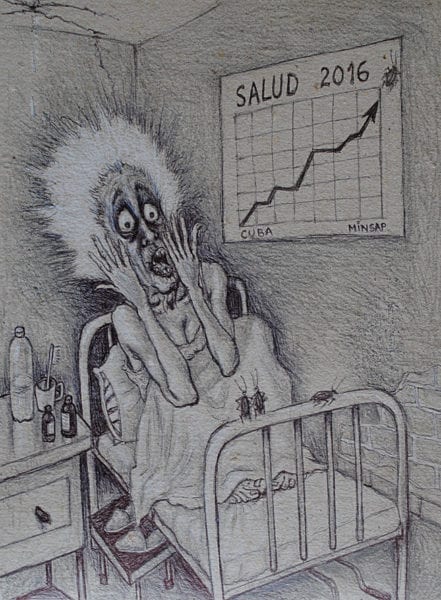Are Cuba’s Healthcare Resources and Services Improving?
Erasmo Calzadilla
HAVANA TIMES — Cuba’s 2015 Yearly Health Statistics Report has already seen the light of day. In my previous post, we examined a number of demographic trends of importance to the country’s future. In this one, we will focus on health resources and services. How have these evolved over recent years? Let us have a look at some indicators.
Increasing spending in the health sector. What’s the limit?
According to data provided by the Yearly Health Report, spending in Cuba’s health sector has been growing exponentially since the beginning of the revolution and represents nearly 10% of total State expenses (1). Why, then, aren’t we noticing exponential improvement and rather seeing stagnation and, in some cases, frank deterioration? Are official statistics being doctored? Could it be the price of medications, instruments and other supplies used in health services has also gone up exponentially?

Growing number of MD’s and doctor’s visits
The percentage of physicians in terms of the total population has grown in a steady, linear fashion. In 2015, this figure was again record-breaking. In addition, the number of doctor’s visits was also larger than ever before.


The public, however, has a different perception of the situation. Many are of the opinion that finding a doctor – particularly a specialist – is becoming increasingly difficult in Cuba. There’s also the widespread perception that the personal and scientific aptness of health personnel has worsened substantially.
Let us conduct a few simple calculations. According to official sources, around 25,000 Cuban medical doctors are currently working abroad. If we subtract this figure from the total number of doctors (87,982), we would be left with 62,982 doctors practicing in Cuba. That is approximately the number of doctors who were practicing on the island in 1999 (2). However, according to official statistics, in 2015 there were 8 million doctor’s visits than in 1999. The basic question that comes to mind is: how is this possible?

Services for mothers and children and related matters
In the previous post, I mentioned that Cuba’s birth rate is low and that it is undermining population renewal. The root of the problem, however, isn’t a lack of health care services for mothers or children. According to official statistics, infant mortality and services for pregnant women have gradually improved, placing Cuba in a good ranking internationally. The rate of abortions has grown slightly over recent years, but it is still significantly lower than the record reached in the 80s.



Free blood donations. Declining solidarity?
Lastly, I came across a trend that caught my eye. The number and rate of free blood donations were the lowest since a peak was reached in the 90s. The crisis that befell socialism scourged the myth of solidarity and undermined the ability of State and para-state institutions to demand (sometimes through blackmail and pressure) free blood donations. If current trends continue, if solidarity continues to wane, in a few years’ time we’ll have to carry out blood transfusions using tomato juice, or pay for the service.

Conclusions
One of the points of pride and raisons d’etre of the Cuban revolution has been its health system. Before, we used to say we were a “world medical superpower.” Official statistics claim that resources destined to this crucial sector continue to grow and that services are gradually improving. People’s perceptions, however, is that the public health system is falling apart. Curiously, there are no indicators that reflect popular sentiment.
Are the numbers blown out of proportion or is it that people are hypersensitive about the deterioration of the health system? In the next post, we will try to answer these questions.
—–
Notes:
- The total percentage in healthcare spending with respect to total State spending was 12 % in 2014, the last year for which data is available.
- In 1999, there were around 2 thousand Cuban medical doctors working abroad, as I was able to calculate after reading this article.






